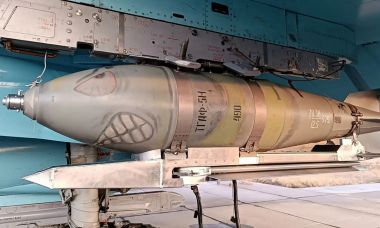Bom lượn dùng bộ dẫn đường UMPK Nga tại Ukraine gây quan ngại với thiết kế thô sơ và vội vàng
In a recent video posted by a Russian pilot, the Unified Guidance and Lift Unit (UMPK) system was showcased, revealing the use of the UMPK bombs being dropped from a Su-34 fighter jet and gliding towards their intended targets in Ukraine. This video marks the first documented footage of the UMPK system being deployed in real combat scenarios. The UMPK is a low-cost and easily manufactured guidance system utilized by Russia in Ukraine, resembling the concept of the JDAM-ER system employed by the United States to convert regular bombs into smart ones. This article delves into the various aspects of the UMPK system, including its advantages, drawbacks, design flaws, and implications in the conflict between Russia and Ukraine.
Advantages of the UMPK System
The UMPK system has been in use by Russia since the beginning of this year, posing a significant threat to Ukrainian forces. It offers a cost-effective alternative to producing specialized guided munitions, enabling the conversion of regular stockpiled bombs into smart ones. The UMPK system prioritizes low cost and quick production, rather than being a highly specialized and expensive weapon. The affordability of the UMPK is noteworthy, with reports suggesting that a complete UMPK system has a factory price of around 24,000 USD, which is significantly cheaper compared to the Kh-29 guided missile with similar explosive power, costing around 140,000 USD per unit. Additionally, the UMPK’s capability allows Russian aircraft to release the bombs from high altitudes, granting the munitions an extended range while keeping the aircraft out of reach of most Ukrainian air defense systems.
Design Flaws and Hasty Deployment
Experts have analyzed the UMPK system’s design and pointed out certain flaws that indicate a rushed and underdeveloped approach. One visible flaw identified is the crude design of the lift unit wings, which could benefit from refinement and further development. These design imperfections suggest that the UMPK system was hastily designed and did not undergo the necessary comprehensive testing before being deployed in real combat scenarios. Some images captured by Russian pilots and circulated on social media demonstrate the mounting of the UMPK system on Su-24 attack aircraft and Su-34 fighter jets, exposing the primitive design of the attached lift wings.
Bombs’ Lifespan and Reliability
Another concern associated with the UMPK system is the reliability and durability of the bombs themselves. When detached from the aircraft, the detonation mechanism of the UMPK bombs switches to an armed state, similar to regular bombs. This means that if the lift wings fail to deploy, the bombs could potentially fall and explode within Russian territory. There have been instances, such as the incident in Belgorod in late April, where a Su-34 dropped a bomb that failed to detach properly and exploded on Russian soil. There have also been reports from Russian fighter pilots acknowledging the flaws and acknowledging the need for improvements in the UMPK system, stating that it has several weaknesses due to its rushed development.
UMPK’s Guiding Capability
One lingering question regarding the UMPK system is its guiding capability. It remains unclear whether the UMPK system has the capability to adjust its flight path during its descent. However, recent images depicting a dissected UMPK system revealed the presence of the Kometa-M antenna and satellite positioning equipment. This indicates that these bombs possess a satellite-guided approach to their targets. The Kometa-M antenna is used to receive GPS and GLONASS signals, enabling the system to maintain accuracy even in environments with strong electronic jamming. The initial models of the Kometa antenna, developed by the VNIIRT Progress company in Moscow, weighed around 40 kg. However, continuous improvement efforts have resulted in the development of the lightweight Kometa-M, weighing approximately 0.14 kg, which is currently integrated into the UMPK system.
Ukrainian Air Defense Challenges
Ukrainian air defense forces have repeatedly expressed their inability to counter the UMPK bombs employed by Russia. This has led to calls from Ukraine for Western assistance, specifically requesting the provision of F-16 fighter jets. Without effective countermeasures against the UMPK system, Ukrainian military bases and critical infrastructure remain vulnerable to the UMPK-guided bombings conducted by Russian aircraft. Reports suggest that approximately 20 UMPK bombs are deployed daily, with the capability to reach targets up to 70 km away. The Ukrainian air defense network lacks the capability to intercept and counter these guided bombs, which poses a significant challenge for Ukrainian defense forces.
In Conclusion
The UMPK system being utilized by Russia in Ukraine has raised concerns due to its crude and hastily designed lift wings, signaling a rushed and underdeveloped approach. Although offering cost-effectiveness and the ability to convert regular bombs into guided munitions, the UMPK system’s flaws and unreliability pose risks. Nonetheless, recent images reveal the presence of satellite positioning equipment, suggesting that the bombs possess a satellite-guided approach to their targets. Despite Ukraine’s admission of their inability to counter the UMPK system, Western assistance in the form of advanced fighter jets has been sought to mitigate this threat. The conflict between Russia and Ukraine continues, and the utilization of the UMPK system underscores the evolving nature of warfare and the challenges faced by modern defense forces.


